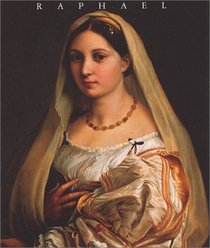Search -
Raphael
Raphael
Author:
All of Raphael's most important paintings as well as a significant number of his drawings and engravings are reproduced, principally in color, in this splendid new tribute to one of the most admired artists of the Italian Renaissance. In this lavishly illustrated book featuring some 300 illustrations, the author takes a fresh, critical look at ... more »
Author:
All of Raphael's most important paintings as well as a significant number of his drawings and engravings are reproduced, principally in color, in this splendid new tribute to one of the most admired artists of the Italian Renaissance. In this lavishly illustrated book featuring some 300 illustrations, the author takes a fresh, critical look at ... more »
ISBN-13: 9780789207708
ISBN-10: 0789207702
Publication Date: 12/2002
Pages: 386
Rating: ?
ISBN-10: 0789207702
Publication Date: 12/2002
Pages: 386
Rating: ?
0 stars, based on 0 rating
Genres:
- Arts & Photography >> Individual Artists >> ( P-R ) >> Raphael
- Arts & Photography >> Individual Artists >> General
- Arts & Photography >> History & Criticism >> General




